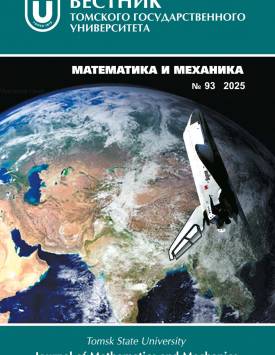Idempotent and nil-clean formal matrices of order 2 over residue class rings
Let us consider the set of formal matrices K = /pmZ Z /pnZ a + pmZ b + p"Z a,b,c,d G Z f Z /pnZ Z /pnZ + pnZ d + pnZ) \ over residue class rings Z/pmZ and Z/pnZ, where p is a prime, m and n are natural numbers, m > n > 0. For any matrices A, A'g K, we define multiplication as follows: fa + pmZ b + p”Za' + p”Z b' + p”Z_ [ c + p”Z d + pnZ c' + pnZ d' + pnZ)~ _f aa' + pm-nbc' + pmZ ab'+ bd' + pnZ V ca' + dc' + pnZ p"'-”cb' + dd' + pnZ) With entrywise addition and multiplication introduced as above, the set K forms a ring. It is known that a formal matrix from K is invertible if and only if its elements on the main diagonal are not multiples of p. It is also known that a formal matrix from K is nilpotent if and only if its elements on the main diagonal are multiples of p. We call the sequence of natural numbers defined as follows Catalan numbers: C1 = 1, Ck+1 =s cCk. , i.e. C1 = 1, C2 = 1, C3 = 2, C4 = 5, C5 = 14, C6 = 42 and so on. i =1 The following theorem is the main result of our paper. Theorem 1.2. Matrix A is a nontrivial idempotent of K if and only if A has the form A = or A = 1 -1+ pmZ b + p" Z c + p"Z p"Z CT+1 + pm Z b + p" Z c + p" Z 1 -CTy + p" Z " -1 where b, c g Z, v = v (pm "bc)k , where Ci are Catalan numbers. k=1 Note that v here can be equal to 0 (then ctv = 0 ). Corollary 2.2. The ring K is not a k-nil-clean ring for any natural number k such that k < p - 1.
Keywords
formal matrix ring, idempotent formal matrix, nil-clean ring, Morita context ringAuthors
| Name | Organization | |
| Koroleva Anastasia M. | Tomsk State University | elfimova.nastya@bk.ru |
| Norbosambuev Tsyrendorzhi D. | Tomsk State University | nstsddts@yandex.ru |
| Podkorytov Maxim V. | Novosibirsk State University | maximthegreate@yandex.ru |
References

Idempotent and nil-clean formal matrices of order 2 over residue class rings | Vestnik Tomskogo gosudarstvennogo universiteta. Matematika i mekhanika – Tomsk State University Journal of Mathematics and Mechanics. 2025. № 93. DOI: 10.17223/19988621/93/3
